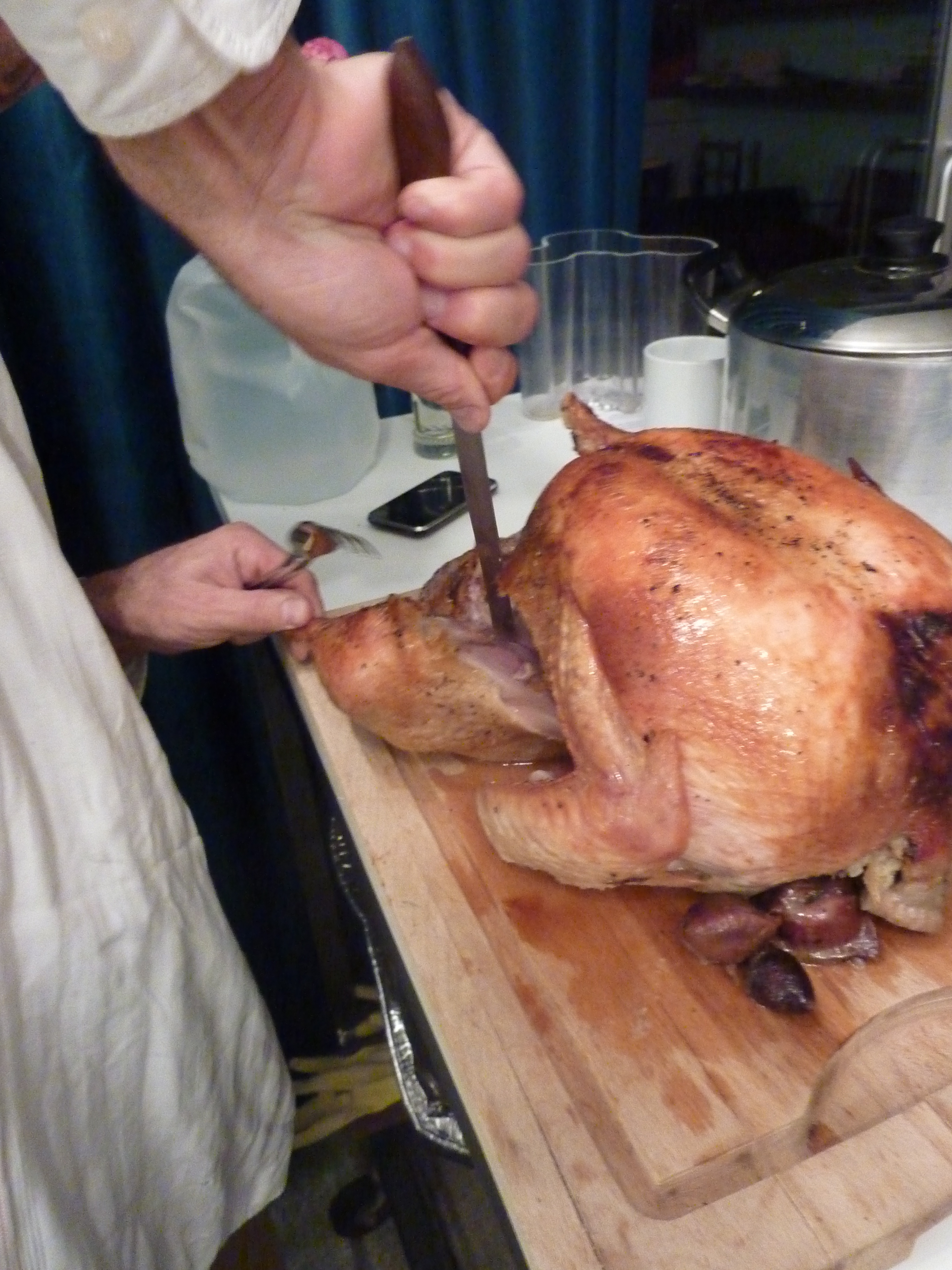The Chemistry of Thanksgiving – 2: Cooking The Two Types of Turkey Muscle At The Same Time
“The Chemical Keys To Thanksgiving Dinner”
This was a very interesting webinar that I joined in on last week, courtesy of the American Chemical Society’s “Joy of Science” Food Chemistry Series.
The speaker was Dr Harold McGee, scientist and author of a regular column in the New York Times, “The Curious Cook”. You may also know him for his ground breaking book “On Food & Cooking: The Science & Lore of the Kitchen.” He writes a lot about the science of cooking, and in particular, the chemistry behind it, and how seasons marry and interact to produce tender, succulent and flavorful dishes.
I thought it might be fun to throw in some food science in our run-up to the Thanksgiving feast! So I’m going to take each of the main points that he covered in turn.
His Thanksgiving presentation covered a variety of things, including:
- The pros and cons of brining
- The two kinds of turkey muscle and how to best cook them
- The stuffing dilemma
- How heating affects the flavor of your sweet potatoes
- Why traditional persimmon pudding is nearly black, and how to make it persimmon-colored
d
So today’s dilemma revolves around the two different types of meat on your turkey……
d
d
Yet More Compromise
Just as the brining process involves compromise, so does the issue of actually cooking the turkey.
Turkey has 2 different meats – delicate breast meat, and tougher leg meat. The goal of cooking a turkey is such that the thigh registers at 180 degrees F and the stuffing at 165 degrees F, while at the same time keeping the more delicate breast below 155 degrees F.
But it can be a challenge cooking both types of meat properly in the same oven to get them both right! The legs contain a higher proportion of connective tissue that doesn’t begin to break down until about 160 degrees F. This means that the legs need to be cooked to about 165 degrees F. Consequently, by the time the legs are done, the breasts are overcooked and dried.
d
One Tip To Get The Temperatures Right
Ice-down the breast while rest of the bird is coming up to room temperature as you thaw it.
Maintaining a temperature differential of about 10-15 degrees between the breast and the legs will ensure adequate cooking of the leg meat while avoiding overcooking the breast. There are various ways to manipulate this, but one way is to let the legs warm up during thawing, while keeping the breasts chilled.
So take the turkey out of the fridge and allow it to come to room temperature, but pack ice around the breasts. This gives the legs a “heat start” during cooking. Additionally, place the turkey on a rack in the oven so that the breast meat doesn’t get direct heat from the pan.
d
What Will You Choose?
Overall, the best way to keep an unbrined turkey breast moist is to cook it separately, gently and precisely. You only have a narrow window of about 10 degrees in which to get your meat cooked right. It’s just done at about 145 degrees, and becoming dry at 155. But naturally, most people love to cook the whole turkey in one go at Thanksgiving. So go ahead any enjoy the challenge!
But don’t forget to let the breast temperature get to no more than about 150 degrees – once it gets there, pull out the turkey, and the temperature will still continue to rise those last few degrees since the outer parts of the bird remain hotter than the inside.
f
f

Now I know why my turkey tastes dry sometimes. Great info.
Are you cooking for Thanksgiving? I bet you’ll have a great meal!
Hehe! No, thankfully I’m not cooking on Thursday – actually heading to Montreal for a few days so I won’t even have an official Thanksgiving!
Never heard of the Packing Ice method.
However, covering the breast sections with a layer or 2 of foil while in the oven (while the rest of the bird is uncovered) can also work.
Let the whole turkey cook, and once the breast nears its temperature, just cover it and let the legs & thighs continue to cook…
I know, the ice packing was new to me too. I did love how Harold McGee integrated the whole chemistry thing into this webinar though, it was so interesting, and a lot of fun.
Oh and thanks for your additional cooking tips too!